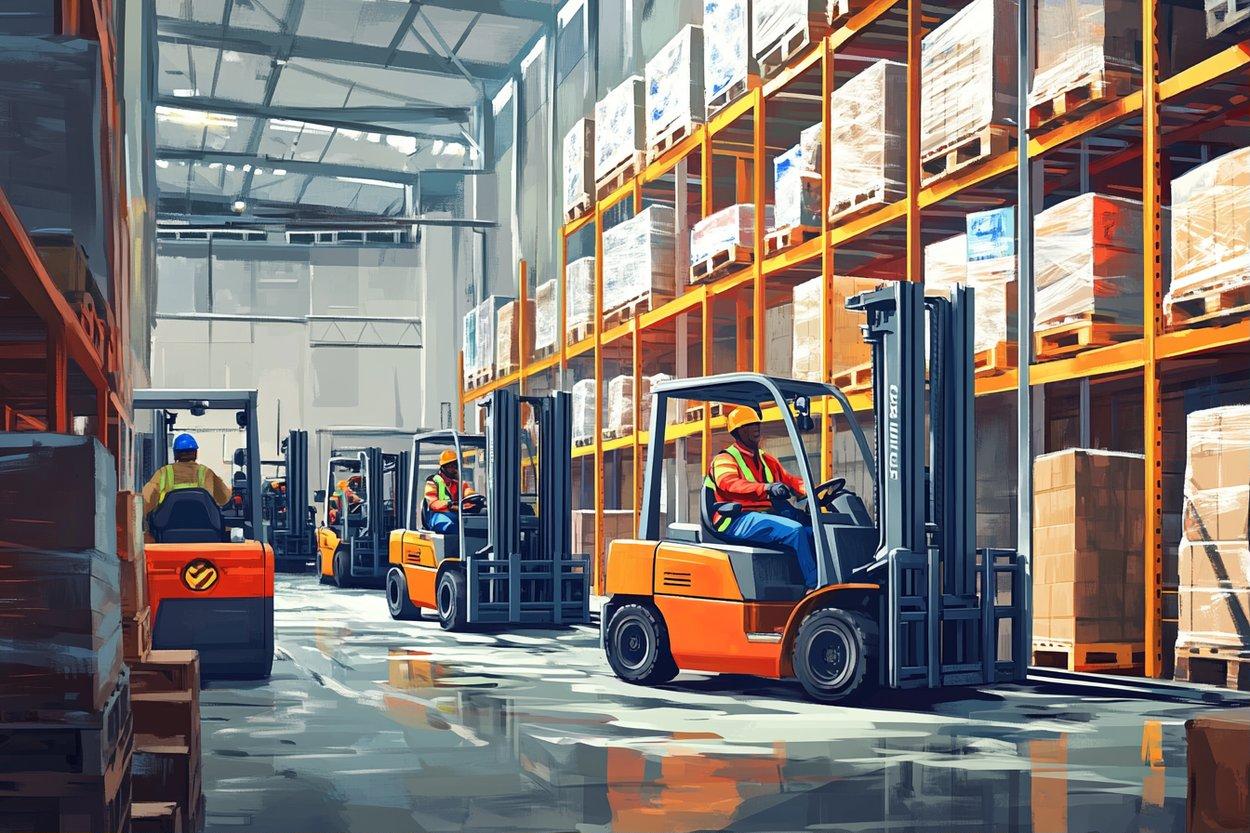A Simple Guide to How Picking and Packing Works in Warehouses
Picking and packing is an important part of how many warehouses and food packing places get items ready for shipping. This guide explains what warehouse picking and packing software does, how teams use it to stay organized, and why some factories use special tools to sort and pack food items. You will also learn how companies find workers in different cities and how large storage spaces are set up for daily tasks.

The warehouse industry plays a vital role in the economy, employing millions of workers who ensure goods are stored, organized, and shipped efficiently. At the heart of these operations lie two essential processes: picking and packing. These tasks may seem straightforward, but they require coordination, accuracy, and increasingly sophisticated technology to meet the demands of modern commerce.
What Does Warehouse Picking and Packing Software Do?
Modern warehouses rely heavily on specialized software to streamline operations and reduce errors. Warehouse picking and packing software serves as the digital brain of fulfillment operations, guiding workers through their tasks with precision. These systems track inventory in real time, generate optimized picking routes, and ensure orders are assembled correctly before shipping. The software integrates with barcode scanners and mobile devices, allowing workers to confirm each item as they pick it from shelves. Advanced systems use algorithms to group orders efficiently, reducing the distance workers travel and speeding up the entire process. By automating task assignment and providing step-by-step instructions, this technology minimizes human error while maximizing productivity. Many platforms also offer analytics dashboards that help managers identify bottlenecks, monitor performance metrics, and make data-driven decisions to improve warehouse efficiency.
How Does the Picking Process Work in Warehouses?
Picking is the process of retrieving items from storage locations to fulfill customer orders. When an order comes in, the warehouse management system generates a pick list that tells workers exactly which items to collect and where to find them. Different warehouses use various picking methods depending on their size, product types, and order volumes. In discrete picking, one worker completes an entire order from start to finish, walking through the warehouse to collect each item. Batch picking allows workers to gather multiple orders simultaneously, improving efficiency when many orders contain similar items. Zone picking divides the warehouse into sections, with workers responsible for picking items only within their assigned area. Wave picking combines multiple strategies, grouping orders by shipping schedules or delivery routes. Workers typically use handheld scanners to verify each item, ensuring accuracy before moving to the next location. The goal is always to minimize travel time while maintaining high accuracy rates.
What Happens During the Packing Stage?
Once items are picked, they move to the packing station where they’re prepared for shipment. Packing requires attention to detail and knowledge of proper packaging techniques to ensure products arrive safely. Workers select appropriate box sizes, arrange items to prevent damage during transit, and add protective materials like bubble wrap or air pillows when necessary. The packing process also involves verifying that all items match the order, applying shipping labels, and documenting the package weight and dimensions. For food products and other sensitive items, packers must follow specific handling guidelines and temperature requirements. Quality checks at this stage catch any picking errors before packages leave the facility. Efficient packing balances speed with care, using standardized procedures to maintain consistency across all orders. Many facilities have implemented packing stations equipped with scales, tape dispensers, and label printers positioned for easy access, creating an ergonomic workspace that supports worker productivity.
Where Can You Find Local Warehouse Facilities?
Warehouse facilities are distributed throughout communities to support regional distribution networks. These operations range from small fulfillment centers to massive distribution hubs spanning hundreds of thousands of square feet. Finding warehouse facilities in your area typically involves searching for industrial parks, logistics centers, or distribution zones near major transportation routes. Many warehouses are located near highways, railways, or ports to facilitate efficient shipping and receiving. Local employment agencies often maintain connections with warehouse operations and can provide information about facilities seeking workers. Online job boards and company websites list warehouse locations along with available positions. Community colleges and workforce development programs sometimes partner with local warehouses to provide training opportunities. The concentration of warehouse facilities varies by region, with higher densities in areas with strong e-commerce activity, manufacturing presence, or strategic geographic positioning for distribution networks.
What Skills Are Important for Warehouse Work?
Working in warehouse picking and packing requires a combination of physical capabilities and attention to detail. Physical stamina is essential, as workers often spend entire shifts on their feet, walking several miles throughout the facility and lifting packages of varying weights. Hand-eye coordination and the ability to work accurately under time pressure help maintain productivity standards. Basic computer literacy has become increasingly important as warehouses adopt more technology, requiring workers to operate handheld scanners and navigate software interfaces. Organizational skills help workers manage multiple tasks efficiently, while teamwork abilities ensure smooth coordination with colleagues across different warehouse zones. Safety awareness is critical, as warehouse environments involve forklifts, conveyor systems, and stacked inventory. Many employers provide on-the-job training for specific equipment and procedures, making warehouse positions accessible to workers without extensive prior experience. The ability to follow detailed instructions and maintain focus during repetitive tasks contributes to both accuracy and workplace safety.
How Is Technology Changing Warehouse Operations?
The warehouse industry is experiencing rapid technological transformation that’s reshaping traditional picking and packing processes. Automation technologies like robotic picking systems and autonomous mobile robots are increasingly common in large facilities, working alongside human workers to improve efficiency. Voice-directed picking systems allow workers to receive instructions through headsets, keeping their hands free and eyes focused on their tasks. Augmented reality glasses are being tested in some warehouses, projecting picking instructions directly into workers’ field of vision. Artificial intelligence algorithms optimize warehouse layouts and predict demand patterns, helping facilities prepare for busy periods. Despite these advances, human workers remain essential for handling complex items, making judgment calls, and performing tasks that require flexibility and problem-solving. The integration of technology aims to reduce physical strain on workers while increasing accuracy and speed. As these systems evolve, warehouse employment is shifting toward roles that involve monitoring automated systems, handling exceptions, and performing quality control functions that require human oversight.
Warehouse picking and packing operations represent a sophisticated blend of human skill and technological support that keeps products moving through the supply chain. Understanding these processes reveals the complexity behind seemingly simple online orders and highlights the important role warehouse workers play in modern commerce. As technology continues to advance, these fundamental operations will evolve, but the core principles of accuracy, efficiency, and careful handling will remain central to successful warehouse management.



